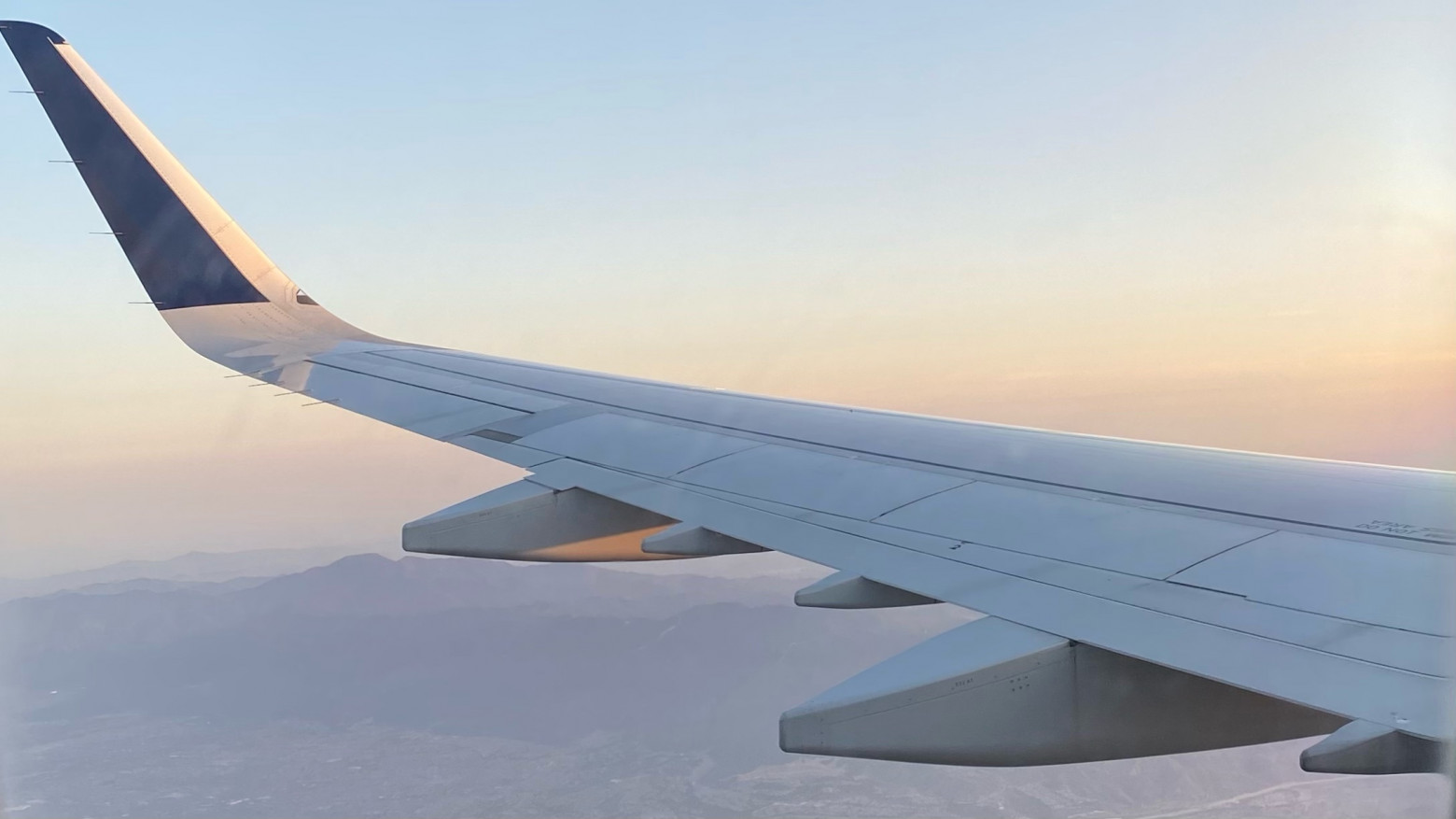
(Photo by Julia MacCary)

(Photo by Julia MacCary)
By Julia MacCary
United Airlines offers a quick fix to neutralize your carbon emissions for a trip from Chicago to Los Angeles and back: $4.60 in carbon offsets.
The round-trip economy ticket costs approximately $200, and the flights emit somewhere in the range of 0.46 to 1.19 tons of carbon dioxide, as much as 20% of the carbon emitted by the average person across the globe annually and 6% for the average American, according to Our World In Data, an online scientific database and publication.
Carbon offsets are monetary investments into global projects that reduce carbon dioxide from the atmosphere to counterbalance one’s emissions. These projects can range from a tree planting program in Kenya to a landfill gas capture in Ohio, according to Terrapass, an offset program.
However, the offsets for the same flights could actually cost upwards of $20 with different agencies, according to estimates from other offset calculating websites such as Atmosfair and MyClimate. The difference could be due to the type of offset, its quality or its social impact—but it also raises questions on the consumers’ end.
Yet what’s more concerning is United’s offsets are “not even real” in taking carbon directly from the flight out of the air, noted United CEO Scott Kirby in a CAPA meeting in March 2021. Instead of banking on carbon offsets, United will focus on making air travel itself become carbon neutral, said United spokesperson Rachael Rivas.
Carbon offsets have grown in popularity, especially as a means to make up for commercial air travel, which releases more than 2.5% of global carbon dioxide emissions, according to Our World in Data.
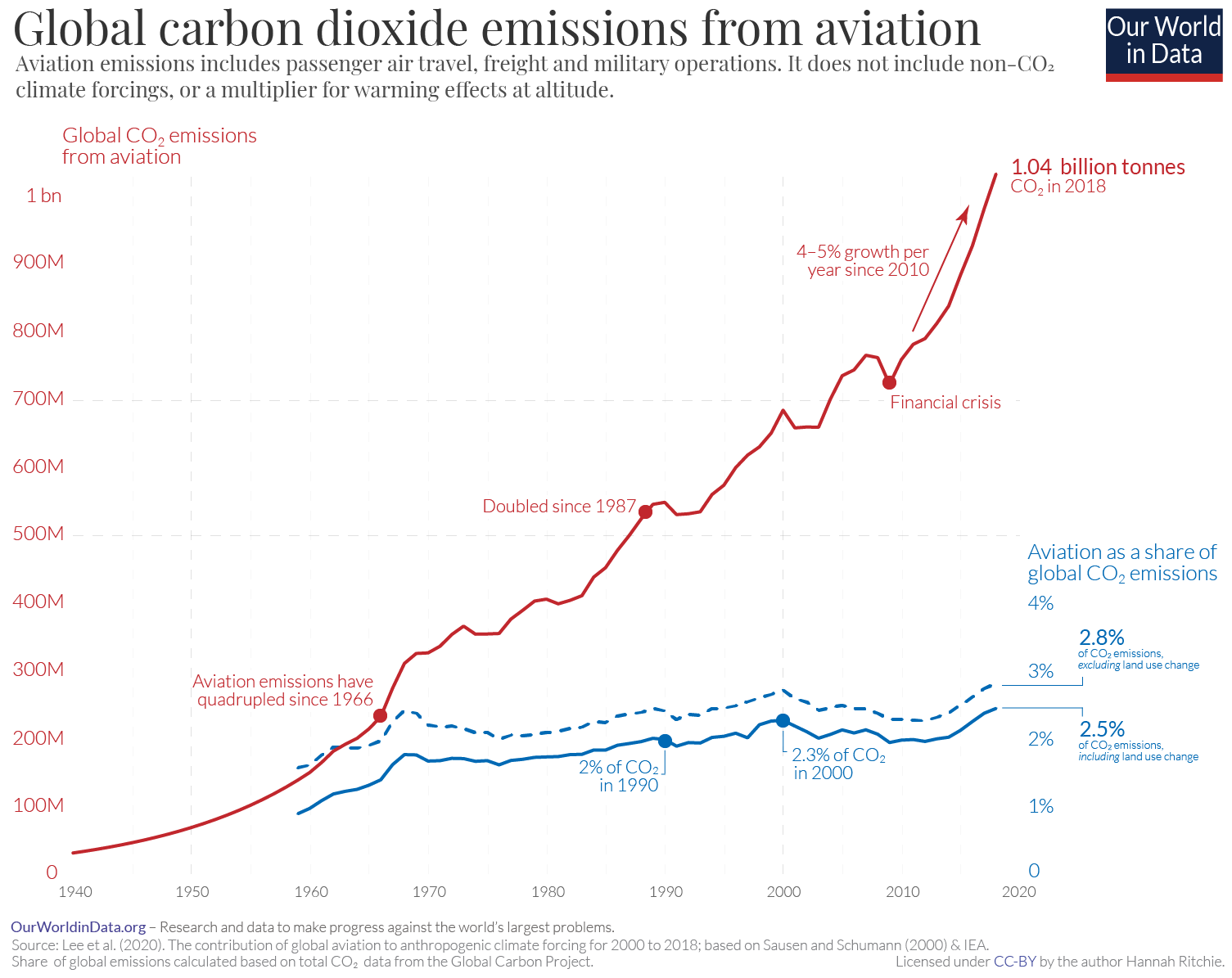
The decades-long increase in aviation carbon dioxide emissions corresponds to skyrocketing air travel. Even though the total carbon dioxide emitted from aviation is growing, the relative proportion of global carbon dioxide emissions from air travel has remained steady.
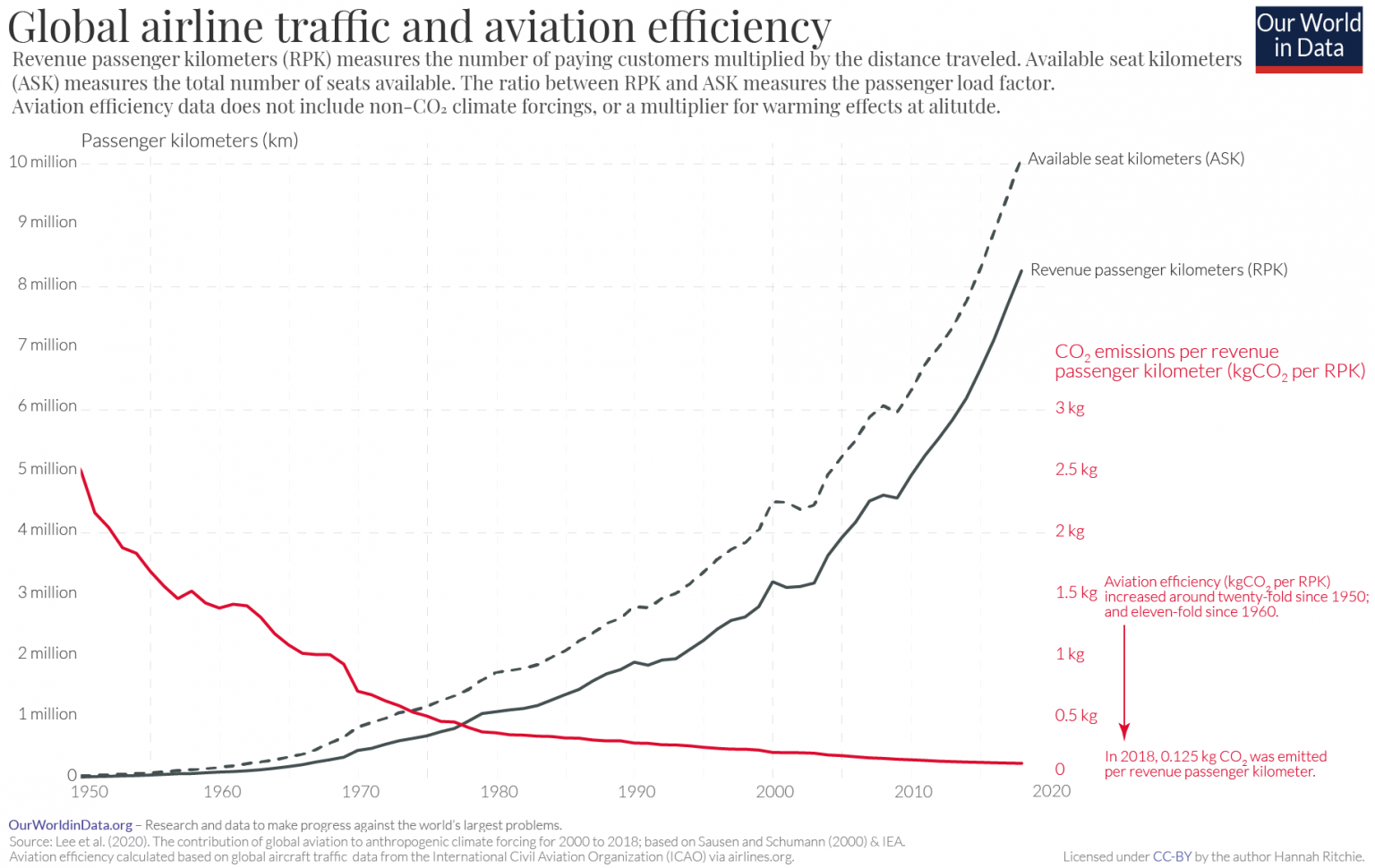
Improvements in aircraft fuel efficiency have allowed carbon dioxide emissions per passenger to plummet since the 1950s, when air travel began to boom. Per traveler carbon emissions have fallen to half of what they were 20 years ago due to more fuel-efficient planes, according to the International Air Transport Association (IATA). The wider introduction of biofuels will allow the carbon dioxide emissions per passenger to shrink more.
“This is something that we can do to begin mitigating some of the damage that’s already been done, just to reduce some of the additional influx and emissions that we’re likely to see in the next 20, 30, 40 years and begin to start solving the problem,” said Pat Brewer, a senior analyst at Green-e, a third-party company that checks offset certification methods. “It’s definitely not open-heart surgery [for climate change]. But I would argue it’s maybe a little bit more than a band-aid.”
Carbon offset programs can be part of the compliance market or voluntary purchases.
Government authorities mandate compliance programs, also known as cap-and-trade, and allow polluting companies to meet greenhouse gas emissions regulations by offsetting in another arena, said Brewer.
Voluntary offset programs let individuals and companies make the choice to purchase offsets to account for their own carbon emissions, said Brewer. Offsets airlines sell to customers or that travelers buy independently fall into the voluntary category.
About 10% of Americans have purchased carbon offsets, and more than half would consider purchasing them in the future, according to a survey of people who believe their carbon emissions affect climate change by Ipsos, a global market research firm.
Carbon offsets encounter criticism from both a philosophical and a physical perspective.
Philosophical objections to carbon offsets include allowing polluting companies to continue their practices while “greenwashing,” the lack of a long-term solution for polluting and the way in which offsets can serve as a “modern indulgence” for carbon-emitting consumers, according to the Carbon Offset Guide.
On a physical level, countless investigations have exposed the impacts of carbon offset programs. Scandals range from projects displacing Indigenous Peoples, said Sarah Milne of the Australian National University, to carbon certificates being awarded for projects planting non-existent trees, according to a report from the New England Center for Investigative Reporting.
Another criticism of carbon offsets is their inaccuracy, both in quantifying how much carbon one’s actions emitted and in assigning a dollar value to offset.
Differences in carbon offset prices are due to the nature of the programs. Offsets such as methane capture are inherently cheaper (and are often bought in bulk by airlines) than projects such as cleaning cooking stoves in Southeast Asia, which have added health and social justice benefits, said Brewer. Despite flaws in numerical accuracy calculating carbon emissions and reduction, carbon offsets are still the best solution at the present, he said.
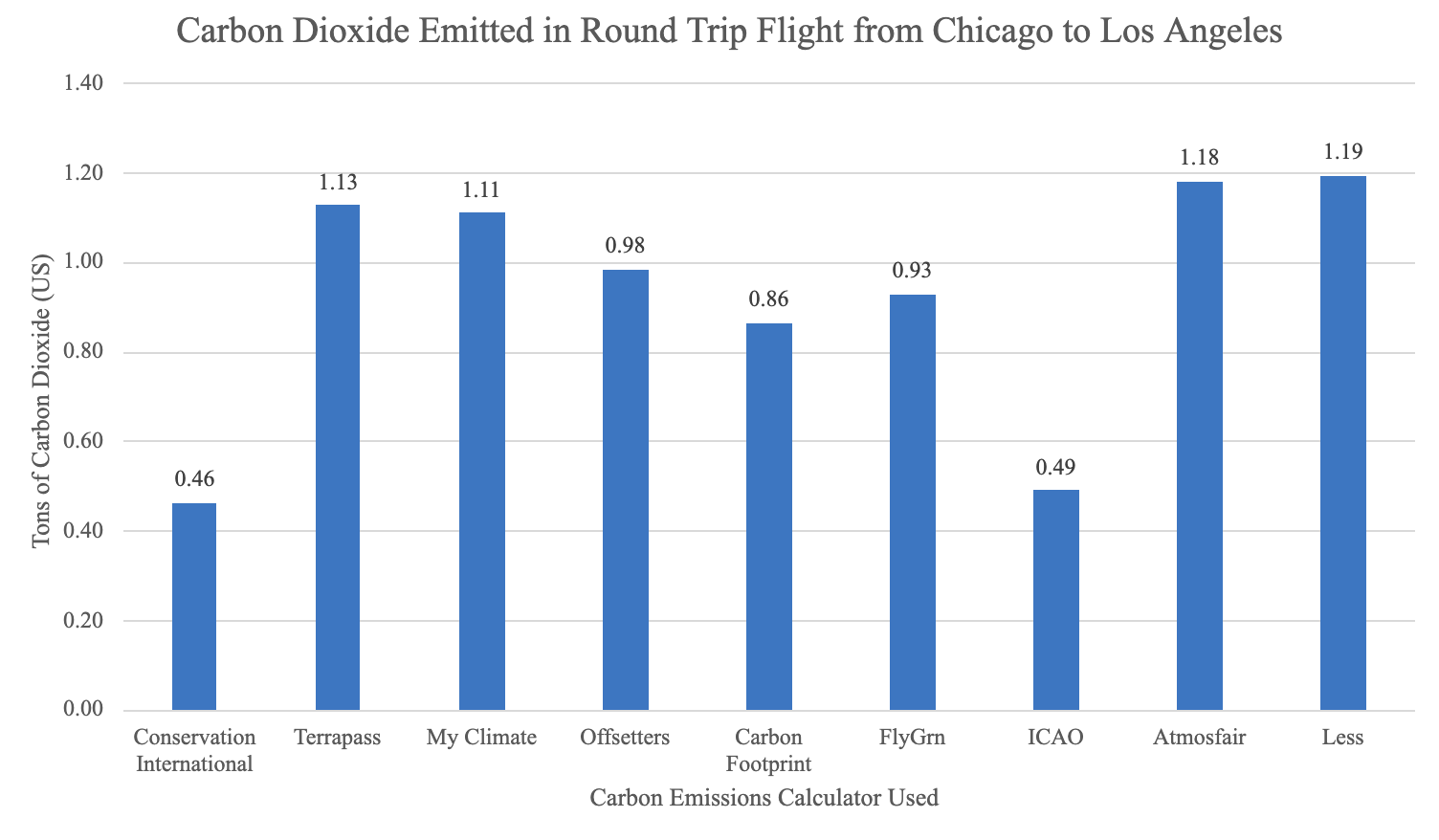
Across the carbon emissions calculators, there was a range of potential carbon footprints on a round-trip economy ticket from O’Hare International Airport to Los Angeles International Airport. The differences in estimates might be due to inaccurate aircraft types used in calculations, according to a Quartz article. Another explanation could be aircraft emissions are more potent in the sky than on the ground and calculators accounting for that theory differently, according to the United States General Accounting Office.
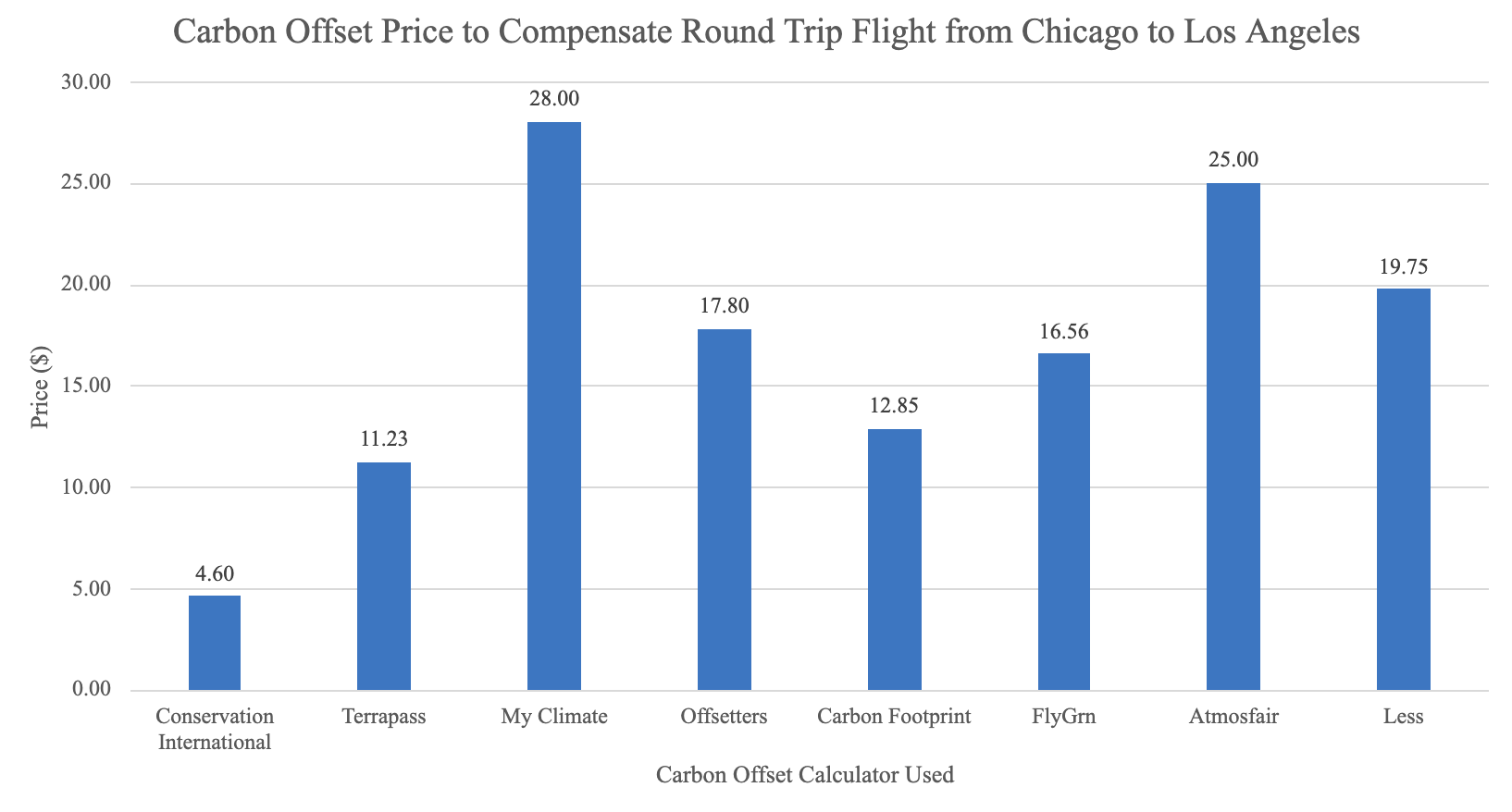
The same round-trip flight yielded different results in how much one should pay in offsets, with United’s partner Conservation International the lowest. Some of the differences in prices are due to the conflicting estimates of carbon dioxide emitted. Other price differences are due to the types of offsets themselves and their quality. Carbon Footprint and FlyGrn both provide a range for carbon offset prices, and the average price from the range is provided in the chart.
The best carbon offset projects are independently certified by companies that set their own standards. Offset projects can pay a fee to join certification programs, whereby third-party auditors then assess the projects to see if they meet the program’s criteria, said Robin Rix, chief policy and markets officer at Verra, an offset-certifying program.
The certifiers Green-e endorses are Gold Standard, American Carbon Registry, Verra and Climate Action Reserve, said Brewer. Green-e provides another level of protection by checking the methods those certifiers used to quantify the carbon offset projects in the first place, he said.
In the same way a food bank doesn’t hope to operate forever, Verra hopes to be out of business by 2050, said Rix. A world where offsets are no longer needed is the ultimate goal, but offsets provide a necessary bridge, he said.
“The reality is, if we were to get down to that level [of net-zero emissions] right now, overnight, it would be, frankly, economically destructive, disastrous. And it would be socially chaotic. We’re talking mass unemployment. We’re talking about mass disruption. It’s just not something that the world can do overnight. And so we do see offsetting as a way to enable that transition to be made in a way while preserving environmental integrity,” said Rix.
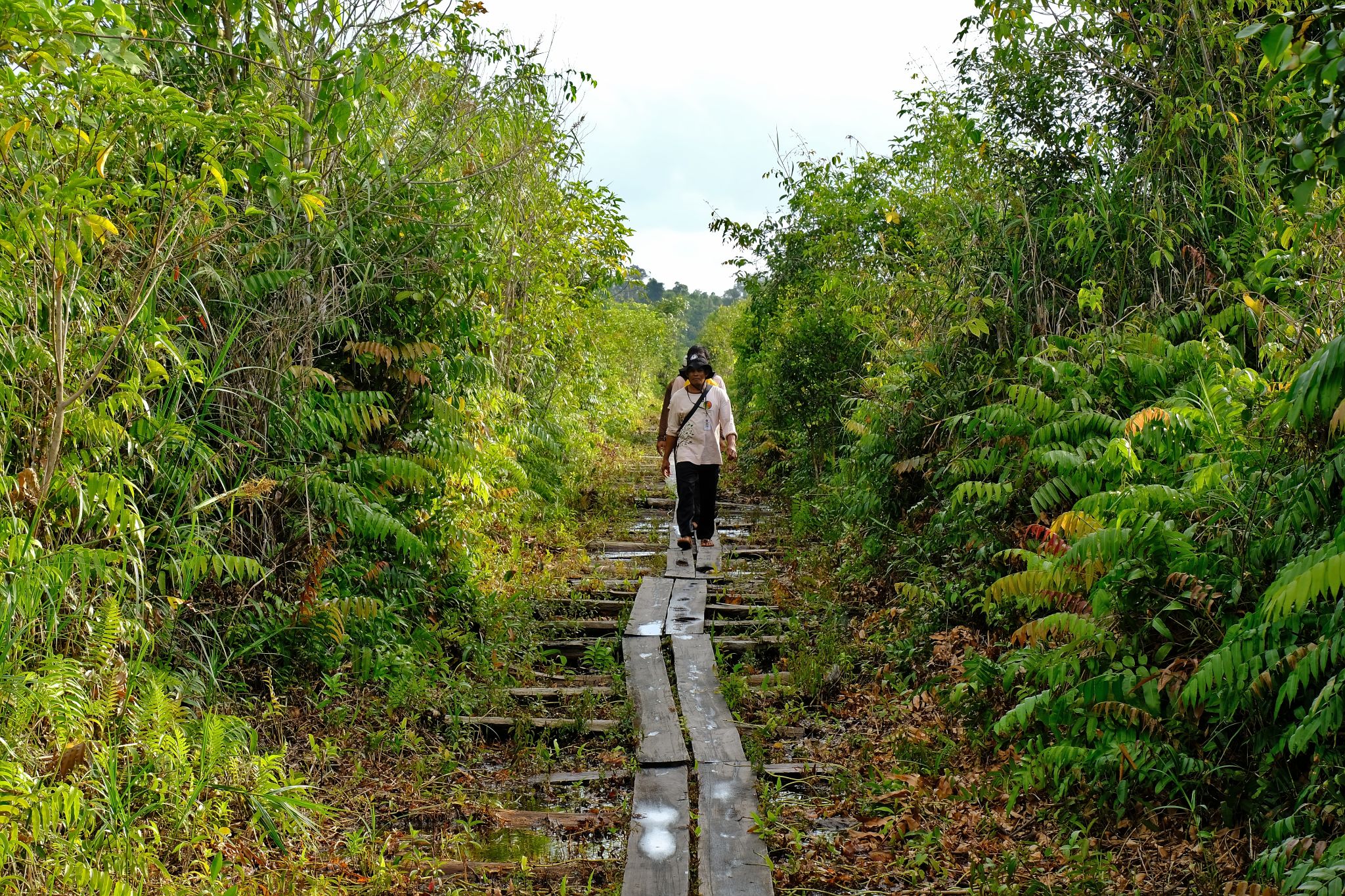
At the Verra-certified Rimba Raya Biodiversity Reserve, initiatives include an orangutan release site (which the pictured path leads to), fire fighting brigades and fuel-efficient cookstoves distribution. The reserve, located in Central Kalimantan, Indonesia, is a Reducing Emissions from Deforestation and Degradation (REDD+) project.
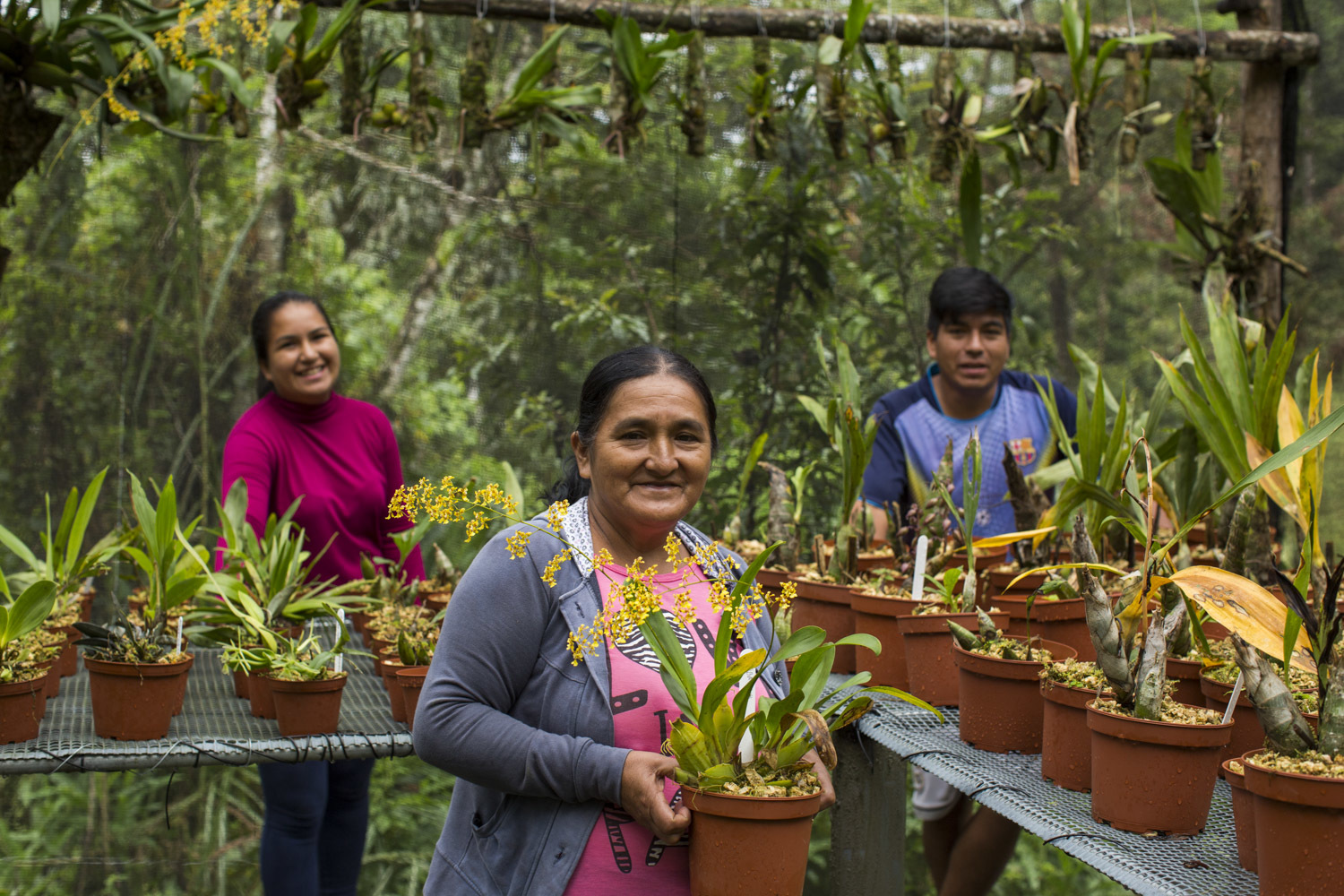
At the Verra-certified Alto Mayo Protected Forest in San Martin and Amazonas, Peru, community workers rescue, cultivate and eventually sell orchids from coffee plantations. The forest is also part of a REDD+ project.
Voluntary market experts anticipate a boom in international carbon offset demand as countries work to achieve their goals laid out in the 2015 Paris Agreement and as companies work to reach their net-zero carbon promises, said Brewer.
Airlines such as Delta, JetBlue and United have partnered with carbon offsetting organizations and make up a large sector of the voluntary market. Delta has purchased more than 12 million voluntary carbon offsets since 2013, according to its website. JetBlue began automatically offsetting domestic flights in July 2020, according to a press release. United is a partner with Conservation International but is also investing in a broad range of strategies to limit emissions including biofuels and carbon sequestration, according to its environmental commitment.
CORSIA, the Carbon Offsetting and Reduction Scheme for International Aviation, is the next step for the airline industry. Organized by the International Civil Aviation Organization (ICAO), the scheme works to prohibit international aviation emissions from exceeding its 2020 levels, leading airlines to buy offsets to negate their excess emissions, according to the European Union Aviation Safety Agency. The vast majority of countries will participate by 2027, increasing demand in the offset market, according to ICAO.
“There’s a role for offsets. They just need to be as strong and certified and verified as possible,” said Theodore Rolfvondenbaumen, a communications manager for Neste, a leading producer in sustainable aviation fuel. “But at the same time, they cannot be treated as an excuse to keep burning fossil fuels.”
Beyond carbon offsets, the airline industry’s long-term sustainability goals involve transitions to biofuels, hydrogen fuel cell aircraft and, ultimately, electric aircraft.
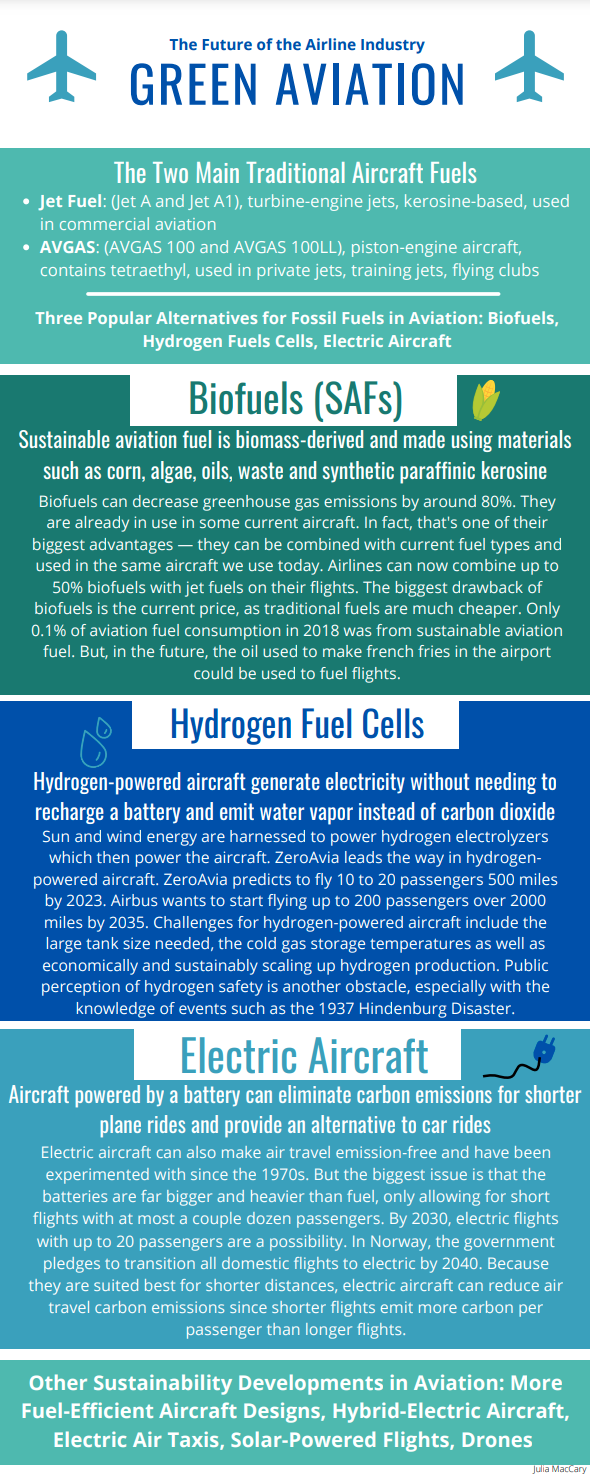
Alternatives to jet fuel are in the works, with biofuels in the beginning stages of its implementation. Until wider administration of these new technologies, carbon offsets remain a solution to negate emissions from traditional aviation and to prevent airlines’ net emissions from exceeding 2020 levels.
Consumers must weigh the social cost versus their private benefit when deciding to fly, said Mark Witte, a Northwestern University economics professor. “If what you end up paying for the trip included the environmental damage, you’d probably be less likely to make the trip,” said Witte. “There’s a certain lack of justice in that. People really rich can be like, ‘Oh, well, I don’t care.’ And, a lot of other people like, ‘Well, my mother’s really ill. I’d like to see her one last time. But I can’t afford it.’”
The bottom line is aviation emits a lot of carbon despite real progress and promising technological developments in the industry. As for your planned trip to California next month, carbon offsets provide a short-term solution for unavoidable carbon emissions. But consumers need to reduce what they can and offset what they can’t, said Brewer.
“I’ve never met someone who has had a zero-emissions life. Everyone has some emissions in their lives, even if it’s their bicycle. That aluminum comes from somewhere. The rubber comes from somewhere,” said Rix. “And so I think anything that anyone can do to neutralize or to address their sources of emissions is a good thing.